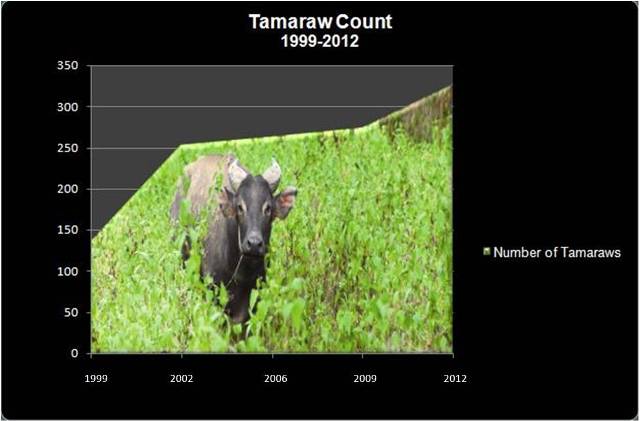Filtered By: Scitech
SciTech
Tamaraw times two by 2020 — WWF, DENR, FEU
By SHAIRA PANELA, GMA News
With only 327 left in the entire world, the tamaraw is a critically endangered species. Photos by Gregg Yan courtesy of WWF
It's a distressingly small number, and one that is actually "a hopeful figure," said Rodel Boyles, the park's Protected Area Superintendent and coordinator for the Tamaraw Conservation Project (TCP).
In a forum held at Far Eastern University (FEU) in Manila on Monday, the World Wildlife Fund (WWF), the Department of Environment and Natural Resources (DENR) and the school launched a campaign to double the number of these wild buffaloes by 2020.
Tamaraws are close kin to Philippines' national animal, the carabao (Bubalus bubalis carabanesis). Compared to the farmers' best friend, tamaraws are smaller and hairier, with light markings on their faces and shorter V-shaped horns. They can only be found roaming on the grassy slopes and forest patches of Mts. Iglit, Aruyan, Baco, Bongabong, Halcon and Calavite in Mindoro.
According to Boyles, there were an estimated 10,000 tamaraws in the early 1900s. But the number started to decline due to rinderpest (cattle plague) in the 1930s, and continuous illegal trade of the animal and its meat among the locals.
The International Union for the Conservation of Nature (IUCN) classified these wild buffaloes as critically endangered—the highest risk rating for any species of animals. %20small.JPG)
The WWF, the DENR and FEU want to double the number of tamaraws by 2020.
Hunting poachers
Boyles said that poachers still hunt tamaraws for meat or personal use.
"In the black market, a kilo of tamaraw costs maybe around P1,200. For farmers who only harvest once a year, it could be the only way to survive," he said.
Tamaraw poaching is punishable under four national laws: Commonwealth Act 73 and Republic Acts 1086, 7586, and 9147.
Currently, TCP has a complaint filed before the Mindoro Regional Trial Court against a group of tamaraw poachers, the first time in the conservation group's nearly 20 years of trying to conserve tamaraws that it has filed a complaint in the court of law. Boyles said they are currently waiting for the warrant of arrest, which will probably be released this week.
"It is our first time to put people behind bars," he said.
Saving tamaraws with the help of other 'tamaraws'
October is National Tamaraw Month, according to Presidential Proclamation 273 of 2002.
In line with this, the WWF, the DENR, and FEU launched a campaign to double the number of tamaraws by 2020. The campaign intends to use technologies such as satellite-tagging, DNA analysis, and other science-based research initiatives to improve their conservation efforts.
"The set of activities starting today aims to determine which technologies can be best used to help grow the numbers of tamaraws," said Dr. Brent Stewart, senior research scientist at Hubbs-Sea World Research Institute. Stewart studies the behavior and characteristics of different endangered species all over the globe.
As of now, TCP employs a total of 30 forest rangers to monitor, breed and help conserve the mammals in Mindoro. There is good news: according to Boyles, they have managed to increase the number of tamaraws in the last decade, despite being short on manpower and technology—from 135 in 1999 to 327 in 2012.

The number of tamaraws has actually increased, from 135 a little more than a decade ago to 327 today. Figure/data from the Tamaraw Conservation Project
TCP, which was founded in 1979, has partnered with WWF and the FEU to save the tamaraw.
FEU, for its part, has been sending representatives sporting the school's green and gold tamaraw logo to Mindoro since 2005 for its "Save the Tamaraws" project. — BM, GMA News
Tags: tamaraw, nationaltamarawmonth
More Videos
Most Popular




